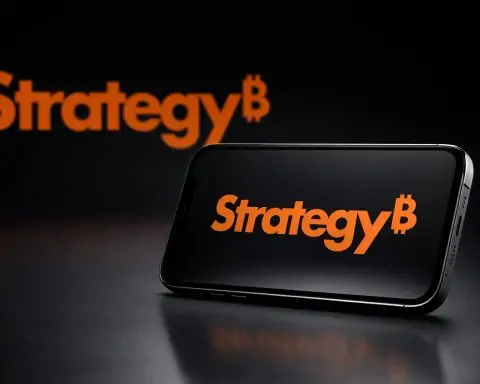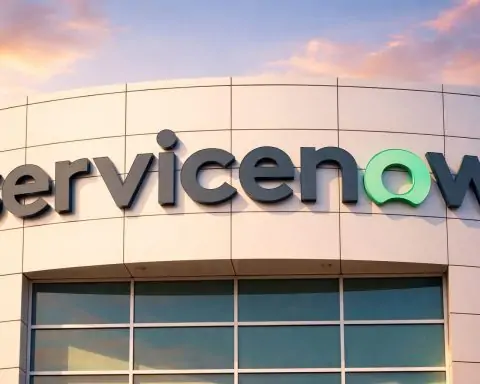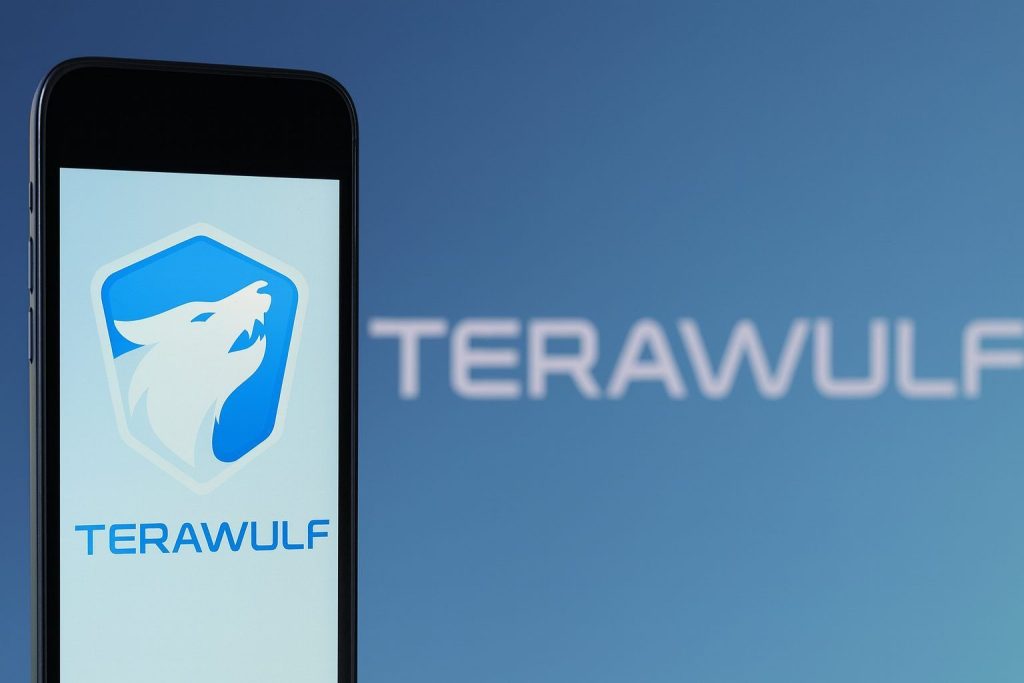Eli Lilly and Company (NYSE: LLY) is having another headline‑heavy session on Wednesday, November 26, 2025, as investors digest its new status as the first trillion‑dollar healthcare company, fresh moves on obesity‑drug pricing, and growing chatter about a potential stock split. [1]
As of mid‑afternoon trading, Eli Lilly stock is changing hands around $1,105 per share, down roughly 0.4% on the day, after touching an intraday high above $1,117. That still leaves its market value just over $1 trillion, following a more than 35% rally year to date driven by explosive demand for its GLP‑1 weight‑loss and diabetes drugs Zepbound and Mounjaro. [2]
This article is for informational purposes only and does not constitute investment advice or a recommendation to buy or sell any security.
LLY stock today: price action and valuation snapshot
- Last price (approx.): $1,105
- Day move: about –0.4% vs. Tuesday’s close
- Intraday range: roughly $1,100–$1,118
- Market cap: a little above $1 trillion, keeping Lilly in the exclusive trillion‑dollar club typically dominated by tech names. [3]
According to Reuters, Lilly now trades at about 50× its expected earnings over the next 12 months, one of the richest valuations in global big pharma, reflecting investors’ confidence that demand for obesity and diabetes treatments will stay strong for years. [4]
Simply Wall St’s latest narrative on Eli Lilly, published today, estimates a fair value around $1,003 per share based on forecasts of $89.1 billion in revenue and $34.2 billion in earnings by 2028, implying modest downside from current levels and highlighting how much optimism is already priced in. [5]
Today’s big story: the first trillion‑dollar health company
On Friday, November 21, Eli Lilly became the first drugmaker ever to hit a $1 trillion valuation, a milestone underscored in multiple reports and now driving much of today’s commentary. [6]
Key points from recent coverage:
- Reuters notes that Lilly’s stock is up more than 35% in 2025, largely powered by its weight‑loss franchise and by GLP‑1 drugs becoming “one of the most lucrative segments in healthcare.” [7]
- Sales of tirzepatide, sold as Mounjaro for type 2 diabetes and Zepbound for obesity, now exceed sales of Merck’s Keytruda, long one of the world’s top‑selling therapies. [8]
- In the latest quarter, Lilly generated more than $10 billion in revenue from its obesity and diabetes portfolio alone, over half of its $17.6 billion total revenue, further cementing the GLP‑1 franchise as the company’s primary growth engine. [9]
Wall Street strategists quoted by Reuters argue that Lilly is increasingly viewed as a “healthcare alternative to the ‘Magnificent Seven’ tech names,” especially as some investors rotate out of richly valued AI and software stocks into fast‑growing pharma. [10]
Obesity and diabetes drugs: growth engine meets pricing pressure
Today’s trading also reflects new clarity on U.S. obesity‑drug pricing and coverage, which affects both Lilly and rival Novo Nordisk.
Medicare price cuts and Trump‑era deals
Early this morning, Benzinga reported that the U.S. Centers for Medicare & Medicaid Services (CMS) have finalized negotiated prices for 15 of the program’s highest‑cost drugs, including Novo Nordisk’s semaglutide (Wegovy/Ozempic/Rybelsus), with new prices effective in 2027. [11]
While the headline focused on Novo, the article also highlighted a “sweeping agreement” between the Trump administration, Eli Lilly and Novo Nordisk to reduce prices and expand coverage for GLP‑1 weight‑loss drugs like Zepbound and Wegovy:
- Starting April 2026, Medicare and Medicaid will cover obesity treatments, including GLP‑1 drugs, cutting patient costs to about $50–$350 per month, down from more than $1,000 currently. [12]
- A White House fact sheet specifies that Medicare prices for Mounjaro and Zepbound will be around $245, less than half of earlier proposals, expanding access even as it compresses per‑prescription revenue. [13]
An AI‑generated news brief from AInvest this morning framed the impact for equity markets: pre‑market, Lilly shares were up roughly 3.7% on “renewed investor confidence” around diabetes portfolio expansion and regulatory pricing clarity, even though there were no new clinical data or major partnerships announced. [14]
The takeaway: pricing pressure is real, but volume expansion and broader reimbursement could more than offset lower unit prices over time—if Lilly can maintain clinical and manufacturing leadership.
Fresh headlines on November 26, 2025
Several new stories specific to today are shaping the narrative around Eli Lilly stock.
1. Simply Wall St: “Is the bull case changing?”
Simply Wall St’s November 26 article emphasizes that Lilly’s $1 trillion valuation is anchored in:
- Unprecedented demand for Zepbound and Mounjaro
- Aggressive manufacturing expansion
- A “deep pipeline” in neuroscience and oncology
The piece also flags a newly advanced civil RICO lawsuit tied to the diabetes drug Actos, involving Takeda and Eli Lilly, as a reminder that high‑impact legal actions remain one of the biggest risks to the investment case. However, the article concludes that this does not materially alter the short‑term catalyst, which remains soaring GLP‑1 sales. [15]
2. Jim Cramer spotlight after the trillion‑dollar moment
In a piece published this morning, Insider Monkey recapped Jim Cramer’s latest comments on Eli Lilly after the company finally hit the trillion‑dollar mark—a milestone that billionaire Ken Langone had publicly predicted on Cramer’s show years earlier. [16]
Cramer continues to rank Lilly as one of his top pharma picks, praising:
- Its lead in the weight‑loss drug market
- A multi‑billion‑dollar manufacturing build‑out, including a $5 billion plant in Richmond, Virginia, for targeted cancer and autoimmune drugs
- The breadth of its drug pipeline across metabolic disease and immunology [17]
He does caution that fierce competition from Novo Nordisk, potential Fed rate cuts and political hostility to high drug prices have periodically stalled the stock, even as the long‑term obesity thesis remains intact. [18]
3. “Stock Split Watch: Is Eli Lilly Next?”
A Motley Fool article published today put Eli Lilly squarely on “stock split watch”, pointing out that:
- LLY now trades above $1,100 per share,
- The company sports a trillion‑dollar market cap,
- And other mega‑cap names with similar price dynamics—especially in tech—have often split their stock to appeal to a broader base of retail investors. [19]
There is no indication that Lilly has officially decided to split its stock—its own investor‑relations page still just lists historical splits, with nothing new announced as of today. [20] But the “four‑digit share price” is fuelling speculation that a split could be on the table if volatility or liquidity become concerns.
4. Institutional investors reshuffle their stakes
MarketBeat reported today that Riverpark Capital Management increased its LLY stake by 8.9% in the second quarter, making Eli Lilly its 6th‑largest holding and representing about 4.3% of the fund’s portfolio. [21]
Two other 13F‑driven headlines from MarketBeat today:
- Silphium Asset Management boosted its Lilly holdings by 8.4%, with the stock now representing around 1.3% of its portfolio. [22]
- Northwest & Ethical Investments trimmed its position by 4.4%, but still held over 28,000 shares worth more than $22 million at the end of the quarter. [23]
While these are relatively small moves in the context of a trillion‑dollar company, they reinforce a picture of high institutional participation with ongoing portfolio rebalancing around the GLP‑1 trade.
5. New Canadian depositary receipts (CDRs) for LLY
In a press release today, Bank of Montreal (BMO) announced the launch of new Canadian depositary receipts tied to several U.S. stocks, including Eli Lilly. The Lilly CDR will trade on the Cboe Canada exchange under the ticker ZLLY, giving Canadian investors easier, Canadian‑dollar‑denominated access to LLY shares. [24]
This move should further broaden Lilly’s international investor base, potentially adding incremental demand over time.
6. New class‑action spotlighting Takeda and Lilly
A report in The Malaysian Reserve describes a civil RICO class action filed by law firm Wisner Baum, targeting Takeda and Eli Lilly over alleged “hidden fraud” related to older pharmaceutical products. [25]
Simply Wall St references this same case as the “newly advanced civil RICO lawsuit tied to Actos”, highlighting it as a reminder that legacy products and historical marketing practices can still create legal liabilities, even as investors focus on GLP‑1 growth. [26]
At this stage, public information on the case is limited, and there is no consensus estimate of possible financial exposure. For now, markets appear to treat it as a background risk rather than a thesis‑changing event.
Alzheimer’s drug Kisunla (donanemab) strengthens the pipeline story
Eli Lilly’s second major growth pillar is its Alzheimer’s drug donanemab, marketed as Kisunla.
Recent milestones:
- The U.S. FDA approved Kisunla in 2024 for adults with early symptomatic Alzheimer’s disease (mild cognitive impairment or mild dementia) with confirmed amyloid plaques. [27]
- On September 25, 2025, the European Commission granted marketing authorization for Kisunla in early symptomatic Alzheimer’s, following Phase 3 data from the TRAILBLAZER‑ALZ program showing a statistically significant slowing of cognitive and functional decline. [28]
- On November 18, 2025, India’s CDSCO approved donanemab for adults in early symptomatic stages of Alzheimer’s (MCI and mild dementia), opening another large emerging‑market opportunity. [29]
Kisunla is not without controversy: regulators and clinicians remain focused on ARIA‑related safety risks (brain swelling and bleeding), and Europe initially hesitated before ultimately granting approval after re‑examination. [30]
Still, the drug gives Lilly a credible shot at building a multi‑billion‑dollar Alzheimer’s franchise alongside its GLP‑1 portfolio—a key reason many analysts see the company as more than a one‑product obesity story.
Analyst sentiment: still bullish, but valuation is stretched
Wall Street research continues to skew positive:
- GuruFocus reports that Truist Securities recently raised its LLY price target from $1,038 to $1,182 while keeping a “Buy” rating, citing continued confidence in long‑term growth. [31]
- The same piece notes that:
- J.P. Morgan lifted its target to $1,150 (Overweight),
- Morgan Stanley to $1,171 (Overweight),
- Citigroup to $1,500 (Buy),
- Leerink Partners to $1,104 (Outperform). [32]
- Across roughly 18–30 covering analysts, consensus remains around “Strong Buy/Outperform”, with average 12‑month price targets clustered just above $1,000 and a wide range from about $700 to $1,500. [33]
Interestingly, several of these average target prices sit below or only slightly above today’s share price, implying that many analysts feel much of the good news is already reflected in the valuation—even as their ratings remain bullish.
Simply Wall St’s model is similar: their base‑case fair value (~$1,003) points to roughly 10% downside, despite assuming nearly 19% annual revenue growth through 2028. [34]
Key risks investors are watching
Today’s news flow highlights several risk factors that current and prospective LLY shareholders need to weigh:
- Regulatory and pricing risk
- U.S. Medicare and Medicaid negotiations will cut headline prices for obesity drugs while expanding coverage, starting in 2026–2027. That may squeeze per‑unit margins even as volumes grow. [35]
- Competition from Novo Nordisk and future entrants
- Novo’s GLP‑1 franchise remains a powerful rival, and both companies are racing to launch next‑generation oral obesity drugs like Lilly’s orforglipron. [36]
- Legal overhangs
- The Actos‑related civil RICO case and other product‑liability matters (past and future) underscore that mega‑cap pharma is always exposed to large, long‑tailed legal risk. [37]
- Safety concerns in Alzheimer’s treatments
- Kisunla’s risk of ARIA and the need for careful patient selection could limit uptake, constrain payer coverage, or lead to additional monitoring requirements. [38]
- Valuation risk
- At ~50× forward earnings and after a 35%+ run this year, Lilly’s stock is priced for excellence. Any hiccup in GLP‑1 demand, regulatory developments, or pipeline news could trigger outsized volatility. [39]
What today’s setup means for LLY shareholders
For investors following Eli Lilly on November 26, 2025, the storyline can be boiled down to bull vs. bear narratives:
The bull case, in brief
- Dominant GLP‑1 franchise in diabetes and obesity, with massive untapped global demand and expanding reimbursement. [40]
- A credible second growth engine in Alzheimer’s disease via Kisunla/donanemab, now approved in the U.S., Europe and India. [41]
- Continued analyst upgrades and price‑target hikes, with most major firms rating the stock Buy or Overweight. [42]
- Growing international access (e.g., Canadian CDRs) and strong institutional interest. [43]
The bear (or cautious) case
- Valuation implies very high expectations for long‑term GLP‑1 and Alzheimer’s revenue; any slowdown could compress multiples quickly. [44]
- Aggressive U.S. and global drug‑pricing reforms may cap margins, especially as programs like Medicare negotiate deeper discounts. [45]
- Ongoing legal actions and long‑term safety questions (GLP‑1s, Alzheimer’s drugs) add uncertainty. [46]
For now, today’s modest pullback looks more like consolidation after the trillion‑dollar breakout than a change in the underlying story. But with the stock trading at a premium multiple and sitting at the center of heated debates over obesity drugs, pricing policy and healthcare spending, LLY is likely to remain a high‑volatility, high‑expectation name.
Anyone considering the stock should carefully weigh their risk tolerance, time horizon and portfolio diversification needs—and, ideally, consult a qualified financial adviser before making decisions.
References
1. www.reuters.com, 2. www.reuters.com, 3. www.reuters.com, 4. www.reuters.com, 5. simplywall.st, 6. www.reuters.com, 7. www.reuters.com, 8. www.reuters.com, 9. www.reuters.com, 10. www.reuters.com, 11. www.benzinga.com, 12. www.benzinga.com, 13. www.whitehouse.gov, 14. www.ainvest.com, 15. simplywall.st, 16. www.insidermonkey.com, 17. www.insidermonkey.com, 18. www.insidermonkey.com, 19. www.fool.com, 20. investor.lilly.com, 21. www.marketbeat.com, 22. www.marketbeat.com, 23. www.marketbeat.com, 24. newsroom.bmo.com, 25. themalaysianreserve.com, 26. simplywall.st, 27. alzimpact.org, 28. www.biospace.com, 29. pharma.economictimes.indiatimes.com, 30. pharma.economictimes.indiatimes.com, 31. www.gurufocus.com, 32. www.gurufocus.com, 33. stockanalysis.com, 34. simplywall.st, 35. www.benzinga.com, 36. www.reuters.com, 37. simplywall.st, 38. www.biospace.com, 39. www.reuters.com, 40. www.reuters.com, 41. pharma.economictimes.indiatimes.com, 42. www.gurufocus.com, 43. newsroom.bmo.com, 44. simplywall.st, 45. www.benzinga.com, 46. simplywall.st







